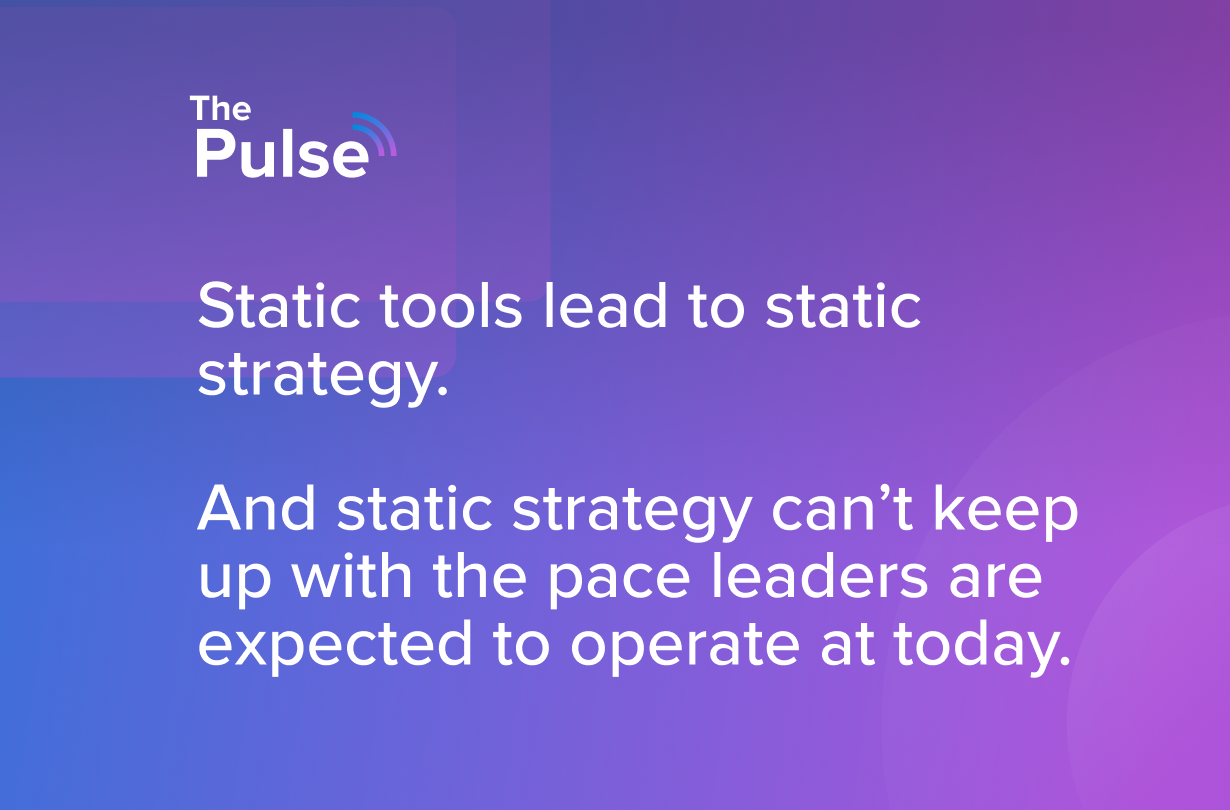
It is not uncommon for businesses to look for strategic planning examples to use as a reference or benchmark when creating or updating their own plan. Looking for both inspiration and ways to improve upon the methods of companies in the same industry will help garner a competitive advantage. The different types of strategic planning can aid in setting your business up for a successful future. That is why our goal with this piece is to show you examples of a successful strategic plan and how Elate can make it easier to visualize, act on, and track your plan.
How Do You Start a Strategic Plan?
A strategic plan helps outline the direction of your organization. Some teams will take six to seven months and 60 pages to complete their strategic plan, and others take several weeks and only ten pages. Whether it takes you more or less time to finish your plan, getting off on the right foot can often be a significant barrier. To help you get started, you should build your strategic plan to answer several critical questions about the business.
- Where is your business currently?
- What is the future of your business?
- How will you get to that future?
- Are you on track to get there?
These questions, or a slight variation of them, will set up your strategic plan to define your business and outline crucial future goals. Now that you know the overall vision for how to start creating a strategic plan, we will discuss what the bulk of the plan will contain.
Steps in Strategic Planning
The steps for following through on the entire process can vary. Still, any strategic plan examples you find online will likely include similar steps. So, what Is included in a strategic plan? Here is a brief breakdown of how to create and implement your strategic plan.
- Identify Purpose: Every company performs strategic planning, and the purpose of setting a strategic plan is to ensure you are building your business as effectively and efficiently as possible. The specific needs you outline at the beginning like expansion, redefining company image, etc, may play a critical role in defining your current strategic plan and the objectives being put in place, but they will align with the vision and mission being defined.This step will also include defining a vision & mission statement. The public sees the vision and mission statements as the identity of your brand and business. The vision statement will outline how the decision-makers envision the business to function and what it will achieve. The mission statement then describes what your business currently does. Having your company focus on the mission statement will help ensure that you reach the vision for the business.
- Analyze: Any successful strategic plan will include an analysis of your current position for where your business is in order to make decisions on how to move forward. Standard tools used to analyze a business are a SWOT (strengths, weaknesses, opportunities, and threats) and PEST (political, economic, sociological, and technological) analysis.
- Set Goals: Goals are vital in outlining the purpose behind the strategic plan. These could be goals for specific departments, like marketing improving organic search leads, or for the company as a whole, such as increasing revenue by 5%. These goals can be achieved through setting SMART goals or OKRs. Specific, measurable, achievable, realistic, and time-based goals apply to both long-term and short-term goals for your company. The SMART method ensures that all of your company's goals are thoughtfully put together and followed through. Objectives that are hastily made and forgotten about are a waste of time and energy. Objectives and Key results represent aggressive goals and define the measurable steps you'll take towards achieving those goals. OKRs are commonly used for quarterly objectives.
- Strategy Mapping: Now that your current market position is known and goals are in place, you can create a strategic map to visualize the entire plan. Using OKR dashboards, like what Elate provides, can help the team stay on course.
- Launch the Plan: Once the plan is in place, it is time to implement your hard work. Set continuous reviews with department leads to ensure that the project is on track. One thing our team has seen time and time again is the importance of establishing a regular rhythm and cadence for how a team tracks their plan and reviews. A helpful tactic is to launch a strategic plan with an agreed-upon check-in cadence to ensure everything is running according to plan.
- Revise: The final stage is not actually launching the plan, but revising the plan by looking at key KPIs to figure out where changes need to be made. The strategic plan is a living document that can change as business needs change, too.
Creating a strategic plan is one thing, but can you communicate your vision, create alignment, and track performance for your whole team? Elate brings all of those features to one place so you can focus on building your company on accountability and results.
Elate: Strategic Planning Made Easy
Creating and implementing a strategic plan can take up a lot of your business's bandwidth. Allow Elate to step in and make the management of your plan one less thing to worry about. We make the process as smooth as possible by integrating with popular tools like Salesforce, Hubspot, Quickbooks, and Jira.
To see how Elate can transform your business, request a free demo today!


